In the 1940s, women's flapper dresses reflected a shift towards more conservative styles amid World War II. You'd notice longer hemlines and cinched waists, showcasing practicality due to fabric rationing. Lightweight materials like rayon and silk dominated, providing comfort for various occasions. Designs often featured drop waist silhouettes that allowed ease of movement, paired with embellishments like sequins and beads for a touch of elegance. Accessories such as cloche hats and pearl strands completed these refined looks. This transformation marked a significant turn in women's fashion, hinting at broader societal changes that influenced the styles of the era.
Historical Evolution of Flapper Dresses
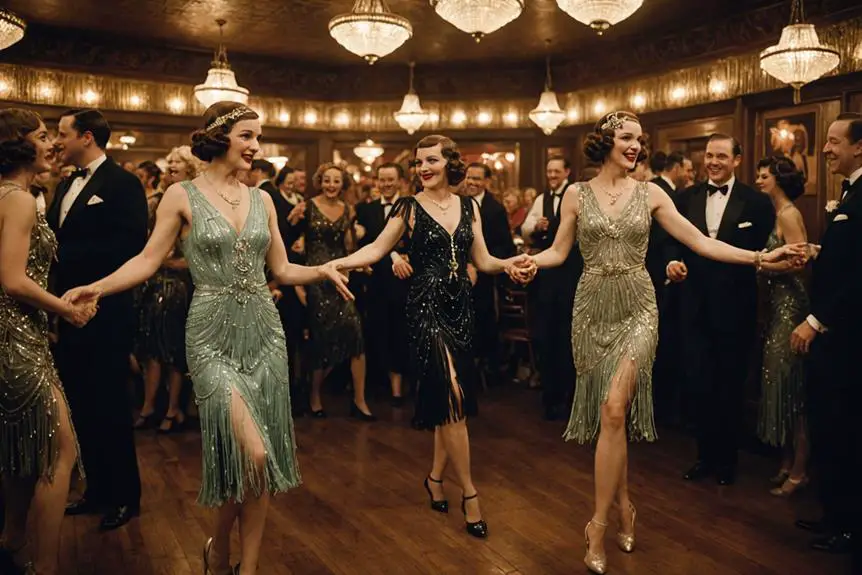
Flapper dresses, which first captivated audiences in the 1920s, marked a significant cultural shift in women's fashion and societal roles. These iconic garments, characterized by their dropped waistlines and knee-length hemlines, symbolized women's liberation and a departure from the restrictive Victorian styles. As you explore the historical evolution of flapper dresses, it's evident that the 1930s brought a more conservative silhouette, with longer hemlines and cinched waists reflecting changing societal norms.
Designers like Madeleine Vionnet introduced the bias-cut dress during this era, which allowed for a flattering fit that emphasized the female form while still nodding to flapper style. However, the onset of World War II drastically altered fashion priorities. Fabric shortages led to simpler designs, moving away from the lavish embellishments that defined the flapper dress.
After the war, the fashion landscape shifted yet again with the emergence of the "New Look" in the late 1940s, which sought to redefine femininity and distanced itself from the flapper aesthetic. This evolution highlights how societal changes continually shape and redefine women's clothing, marking the flapper dress as a pivotal moment in fashion history.
Key Features of 1940s Flapper Styles
In the 1940s, women embraced a refined take on the flapper dress that reflected the era's changing social dynamics and fashion sensibilities. Compared to the 1920s, these dresses showcased a more conservative silhouette, with longer hemlines and cinched waists that mirrored societal shifts during and after World War II. The use of lightweight fabrics like rayon and silk provided comfort and versatility, making these dresses suitable for both casual outings and formal events.
Key features of 1940s flapper styles included the enduring drop waist design, which allowed for ease of movement while maintaining that playful silhouette reminiscent of earlier flapper aesthetics. Embellishments such as sequins, beads, and fringe added a glamorous touch, enhancing the vintage appeal without sacrificing elegance. Accessories played an essential role in completing the look; cloche hats and long strands of pearls were key components that complemented the dresses beautifully.
Price Ranges for Vintage Dresses
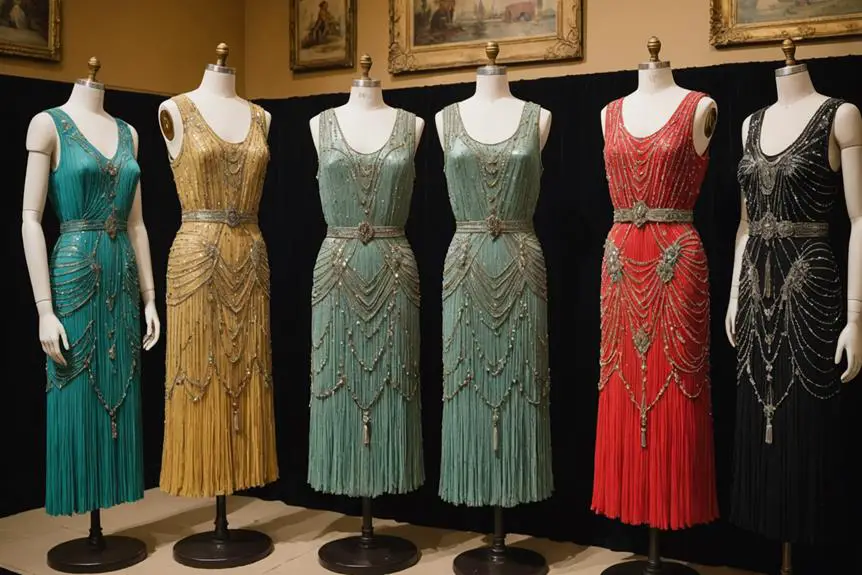
When diving into the world of vintage dresses, you'll quickly notice a wide range of prices that cater to various tastes and budgets. For the budget-conscious shopper, vintage sheer lace dresses are quite accessible, typically priced around $38.00, with shipping costs of about $10.05. If you're drawn to the unique designs of the era, VTG 1940s dresses featuring peplum details average around $49.00, plus $9.75 for shipping. Understanding the historical context of these dresses can enhance your appreciation for the craftsmanship and styles of the time, as well as help you identify genuine pieces with unique identifiers.
On the other hand, if you're seeking something rare and highly desirable, higher-end options like the Vtg 40s film noir dress can command prices around $495.00, with shipping at $15.55. For those who appreciate classic styles, vintage flapper-style cocktail dresses usually cost about $50.00, with shipping fees around $7.58, making them an attractive option for many.
Popular Accessories and Styling Tips
To truly embody the essence of the 1940s flapper aesthetic, you'll want to carefully select accessories that not only enhance your dress but also reflect the era's unique charm. Start with a cloche hat; its fitted design adds a chic touch while framing your face beautifully. Long strands of pearls are vital as well, accentuating the elegance of your attire and providing a classic appeal.
Don't forget a vintage handbag, preferably beaded or sequined, to carry your essentials while maintaining that glamorous vibe. Choosing the right footwear is essential, too—opt for T-strap or Mary Jane shoes, which offer both style and comfort, making them perfect for dancing the night away.
When it comes to hair, you'll want to channel the fashionable trends of the time with finger waves or a short bob cut. These hairstyles enhance the overall flapper look and exhibit the liberated spirit of the era. For makeup, bold lipstick and defined brows are key; they create a striking appearance that aligns perfectly with the adventurous essence of 1940s flapper culture. Embrace these accessories and styling tips to fully capture the allure of this iconic period.
Shipping and Auction Options
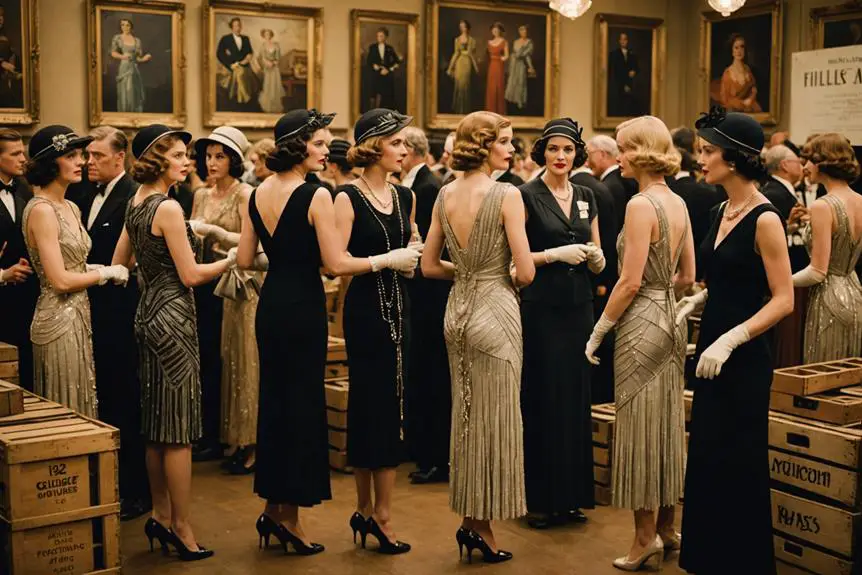
Finding the perfect vintage flapper dress involves not just selecting the right style but also maneuvering the auction landscape and understanding shipping options. Currently, several alluring dresses are available for auction, with enticing prospects like the VTG 1940s dress, which has no bids and four days left for potential buyers to make their move. Similarly, the True vintage midi day dress offers a tempting window of two days and five hours, giving you a chance to snag it before time runs out. Vintage dresses from iconic brands like Betty Barclay can add a unique flair to your collection, reflecting the stylish designs of their era.
When considering your options, pay attention to shipping costs, which can vary greatly. For instance, a black rayon dress ships for as little as $4.47, while a more exclusive 1940s film noir dress could set you back $15.55. If you're eyeing multiple dresses, the vintage 30s, 40s, and 50s lot includes a best offer option, allowing for negotiations that can save you money.
Stay mindful of the auction timelines to secure your desired flapper dresses before they close. Each choice you make in this fast-paced environment can lead you to a unique piece of fashion history.
Condition and Special Notes
While exploring vintage flapper dresses from the 1940s, it's important to evaluate their condition carefully, as many pieces may show signs of wear or damage. For instance, a stunning black rayon beaded dress might catch your eye, but be mindful that it could have noted damage. Understanding the significance of vintage tag identification is important, as condition descriptions are crucial; a beaded village set dress requires your careful reading to avoid surprises after purchase.
On the other hand, you might come across a VTG lace sequin dress in good condition, with a best offer option, which indicates variability in the condition of these dresses. Not all dresses from this era are in disrepair. The vintage 30s 40s ivory chiffon dress is an excellent example, noted to be lined and featuring a self-belt, showcasing its enduring quality.
When considering costume quality dresses, like the vintage silk beaded sequin dress from the 1920/30s style, remember these may be categorized differently based on overall wear and usability. Always prioritize detailed descriptions and photographs when evaluating these vintage treasures, ensuring you make an informed decision before adding to your collection.
Cultural Impact and Legacy
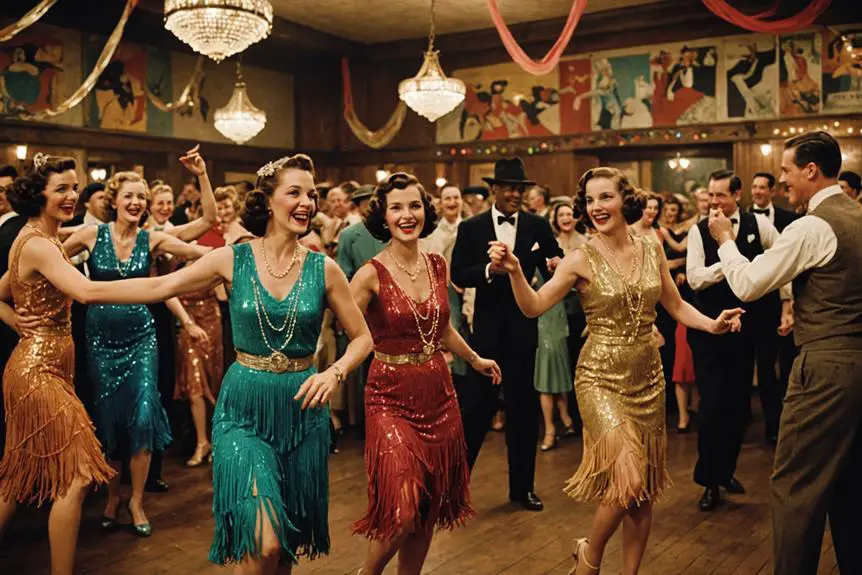
As you explore the condition and significance of 1940s flapper dresses, it's important to recognize their cultural impact and legacy. Although the popularity of flapper dresses declined in the 1940s due to fabric rationing and a shift towards more conservative silhouettes, the essence of flapper culture remained influential. This era marked a foundational shift in women's fashion, as the earlier flapper movement had already begun to champion freedom and self-expression.
The iconic imagery of flappers continued to inspire films and music, with jazz music serving as a significant cultural force that shaped the fashion landscape. As the world emerged from the shadow of World War II, a revival of femininity echoed the flapper movement's spirit of liberation, reinforcing women's roles in society. Flapper dresses became symbols of empowerment, representing a break from traditional norms.
In this way, the legacy of the flapper dress transcended its immediate timeline, influencing future trends and encouraging women to embrace their individuality. The 1940s, though marked by conservatism, still held onto the threads of flapper culture, ultimately paving the way for greater self-expression and freedom for women in the decades to come.
Frequently Asked Questions
What Kind of Dresses Did Flappers Wear?
Flappers wore knee-length dresses with dropped waistlines, often made from lightweight fabrics. These dresses featured embellishments like sequins and fringe, reflecting a bold, androgynous style that symbolized women's liberation during the Roaring Twenties.
What Was the Flapper Dress Controversy?
The flapper dress controversy centered on societal backlash against women's liberation. Critics argued revealing styles undermined traditional femininity, while supporters embraced them as symbols of independence, reflecting a cultural clash between progressive and conservative values during the Jazz Age.
How Were Flapper Dresses Different From Dresses of Earlier Generations?
Flapper dresses differed dramatically from earlier generations by embracing a liberated silhouette, featuring dropped waists and knee-length hems, while earlier styles emphasized structure and modesty, reflecting societal shifts towards freedom and modernity.
Did Flappers Wear Ankle Length Dresses?
No, flappers didn't wear ankle-length dresses. They favored knee-length styles that offered freedom of movement, emphasizing a bold, youthful aesthetic that challenged traditional norms. This distinctive silhouette marked a significant shift in women's fashion during their era.
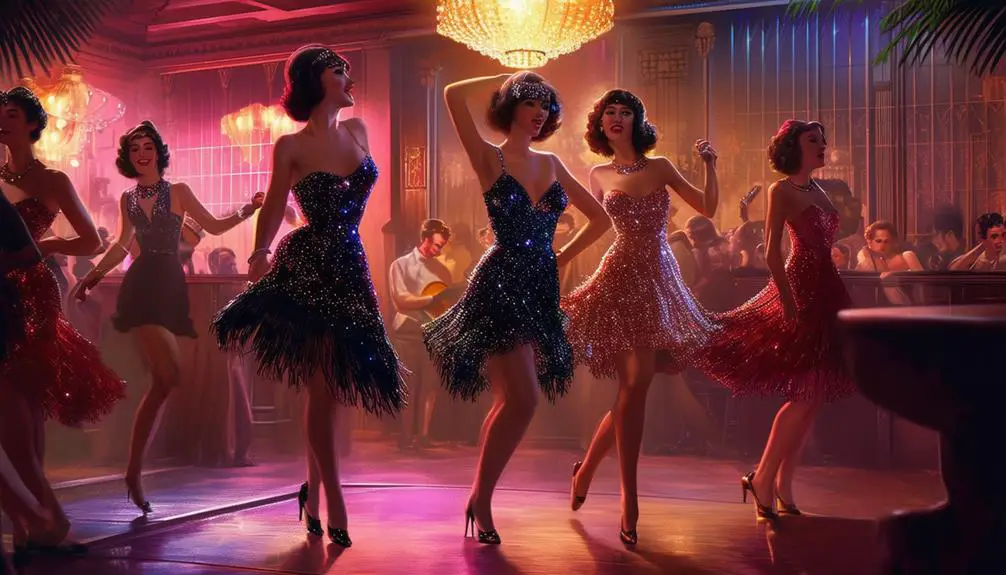

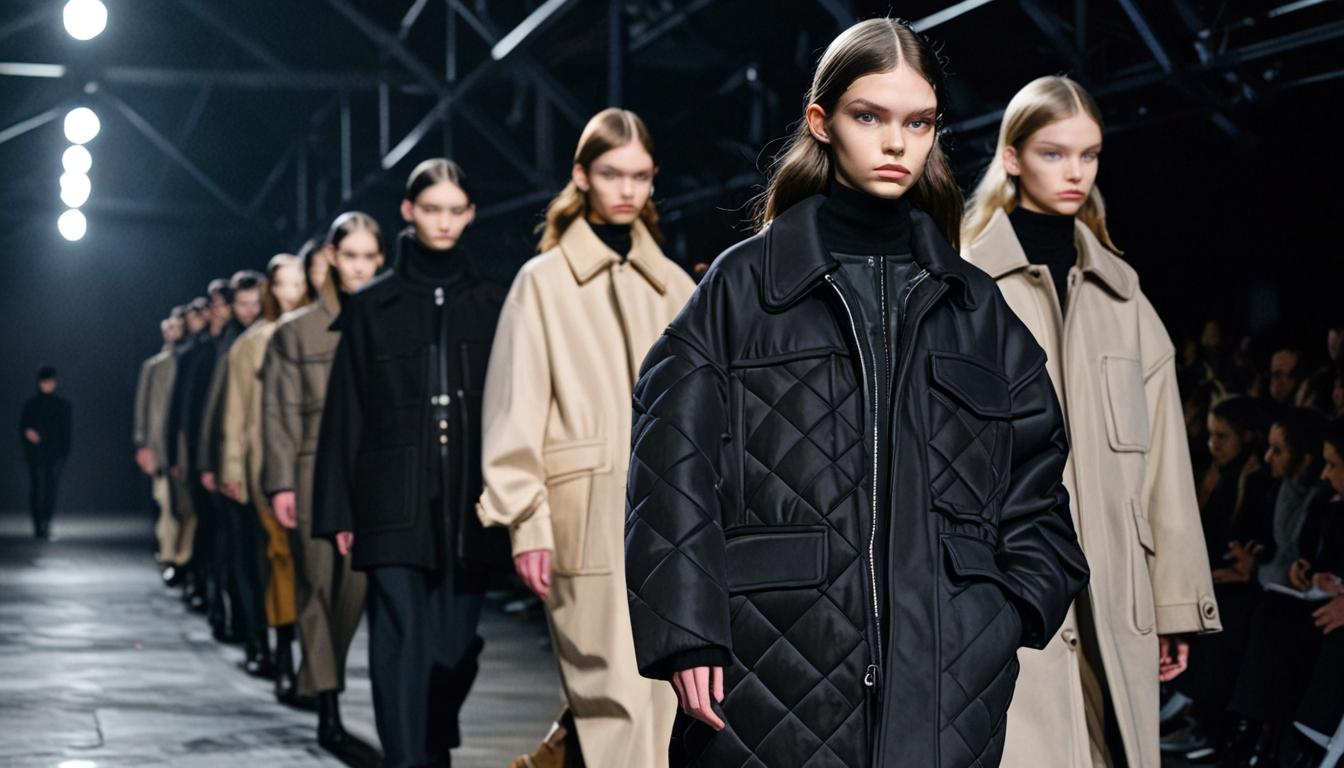
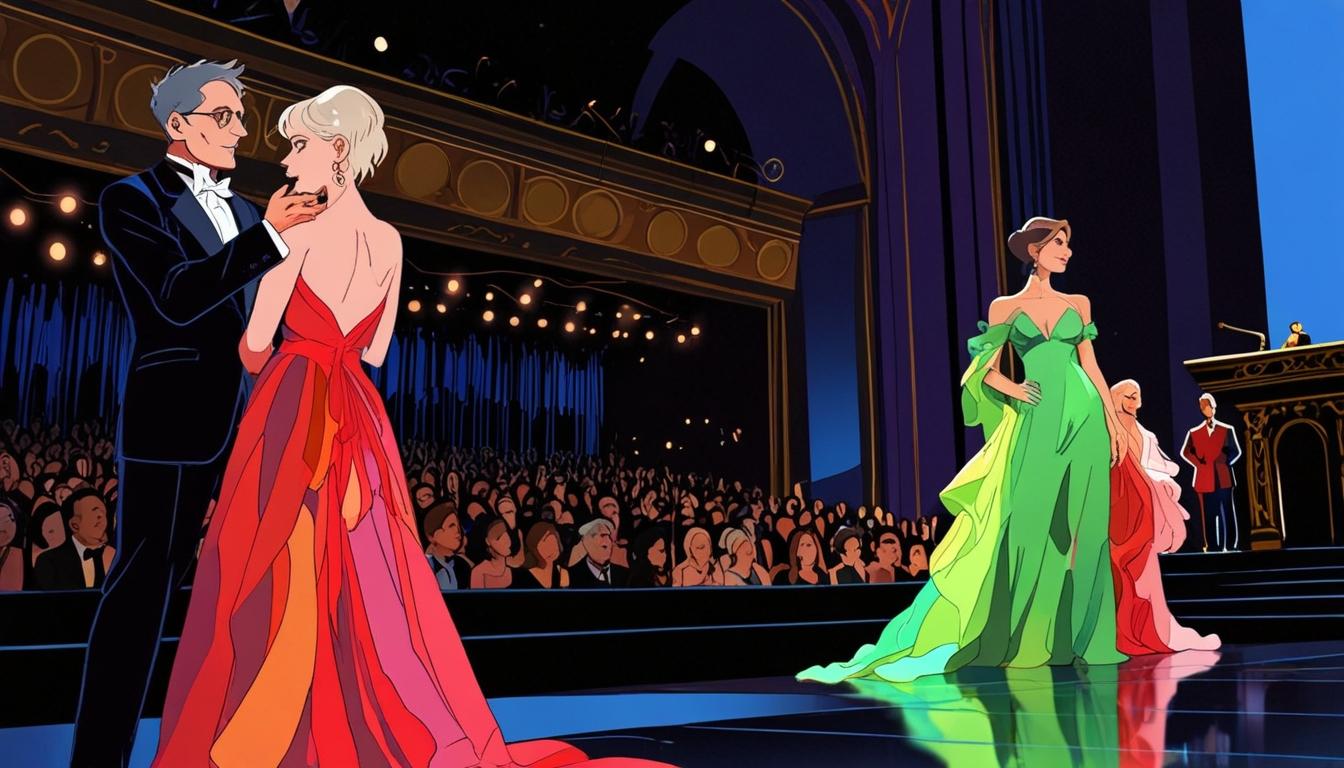

Nicely put, Thank you.
casino en ligne France
Thanks a lot, Very good information.
casino en ligne francais
Really quite a lot of beneficial tips!
casino en ligne francais
Thank you, Lots of knowledge!
casino en ligne fiable
Nicely put, With thanks.
casino en ligne
You actually mentioned this terrifically.
meilleur casino en ligne
This is nicely said! !
casino en ligne
Seriously a lot of beneficial advice.
casino en ligne francais
You reported it terrifically!
casino en ligne fiable
Thanks a lot! Quite a lot of content!
casino en ligne